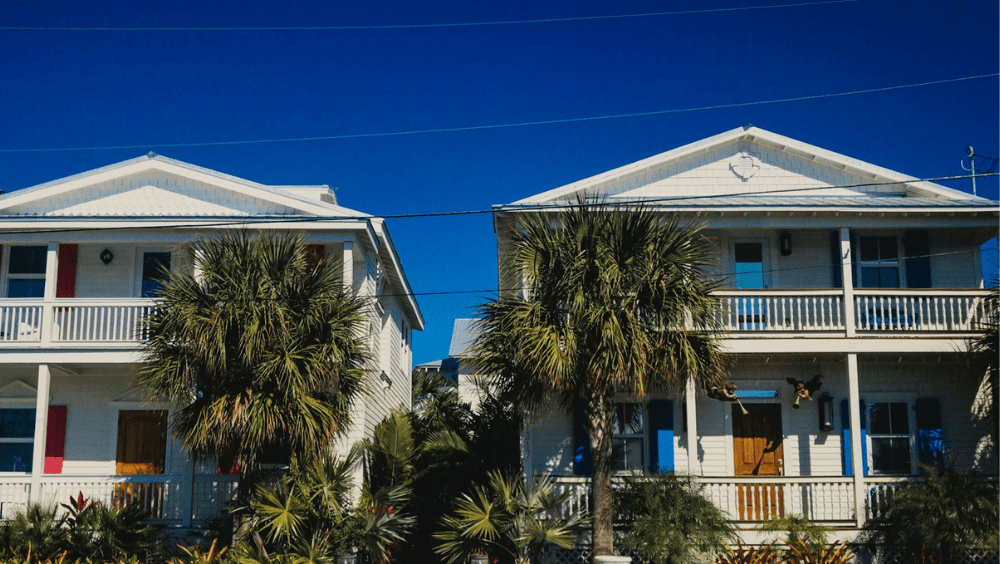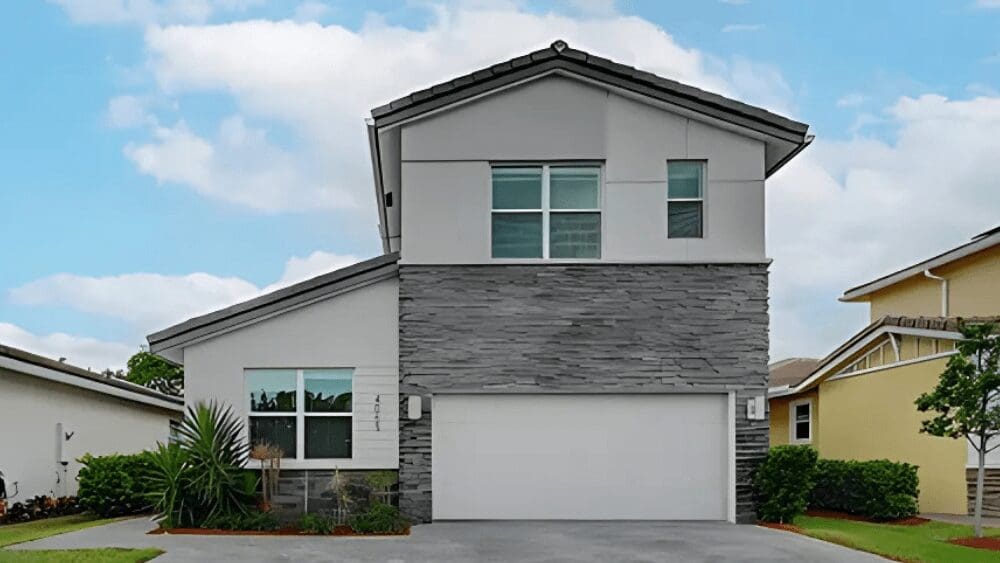
Don’t let the dust bunnies scare you away — your basement is brimming with potential. With some sweat and creative energy, you can transform this underground space into your new favorite room in the house for only a fraction of the cost of building a home addition. “It’s relatively inexpensive. You might be putting up some walls or partial walls, but for the most part, it’s really just a remodeling versus a whole new construction type of a project,” remarks top agent Julie Warzecka, who shares that finished basements are always in high demand in her market of Springfield, MA. HomeAdvisor pins the average cost of a finished basement at $18,395, less than half of the average cost of a home addition at $45,824. In addition to a relatively low project cost, a finished basement recoups on average a 70% return on investment when designed with resale in mind. How’s that for some extra incentive to tackle this renovation? We’ve scoured the Internet for the best basement design ideas to help you maximize the use and value of this underground den. “Probably the most popular and the most dramatic is when you walk down to a home theater type of environment,” Warzecka shares. “It’s a little higher end, more money has gone into it because the walls are wired for sound and speakers but it gives the most return on investment and the most value added to the home.” For a truly cinematic experience, opt for a projector and home theater screen over a television. Soundproof the walls with acoustic panels and line the walls with LED-track lights for atmospheric, glare-free lighting. In HomeLight’s Top Agent Insights Report for Q2 2020, real estate agents rank a designated home office as the number one feature buyers want in their next home. Tucked away from street views, chores, and other distractions, a finished basement makes for an ideal workspace. Set up your space with built-in storage cabinets and ample lighting for a functional, comfortable setup. Large basements can uniquely house a pool table and shuffleboard so you don’t have to compromise space in your primary living area. A game room is rewarding for you as a homeowner and makes for an excellent buyer incentive when it’s time to sell. Warzecka shares that oftentimes her seller clients include the game room as-is in the sale: “We do often see sellers include flatscreen TVs that are mounted to the wall and certainly surround sound speakers that are wired into the wall. We’ll see the house get sold with the house pool table and equipment as just sort of a bonus. Buyers love it because they’re walking into something that they don’t have to add anything to.” With pandemic-related gym closures and a new wave of high-tech fitness equipment, more Americans are embracing at-home gyms. In HomeLight’s Top Agent Insights report for Q3 2020, a survey of more than 1,100 real estate agents across the country, 22% of top agents report home gyms among other private amenities as a top priority to luxury homebuyers. If you designate your basement as a home gym, design with ventilation and hygiene in mind. Mount remote controlled fans in the corners of the room to increase airflow. Choose flooring that’s durable and easy to clean, such as laminate wood or vinyl tiles. For added cushion, cover the floor with removable rubber mats; this way your buyer won’t need to replace the floor if they want to use the space for a different purpose. Cool, dark, and void of sunlight, the basement is an ideal space for storing wine. Custom wine cellars maintain a temperature of 58° F, preserving your wine and, in the case of rare varieties, increasing its value over time. A nice bonus, wine cellars enclosed in glass walls contribute visual interest to the rest of the basement. Although homeowners spend an average of $40,000 building a custom wine cellar, a custom cabinet can cost as little as $400, according to Home Advisor. You likely won’t see a huge return on investment from adding a wine cellar, but it can help boost your home’s marketability— and perhaps even persuade a wine lover to make an offer. This top luxury upgrade transforms your basement into an entertainment destination. Emulate a sports bar with a kegerator for fresh beer on tap and a flatscreen TV for watching the game. Or, design a sleek cocktail bar with open shelving displaying your glassware collection and fine whiskeys. The price tag for a built-in bar ranges between $2,000 and $12,000, depending on size and countertop material. Transform your basement into a bedroom for the highest return on investment. In an appraisal, a basement bedroom counts as a bedroom—though it is identified separately from the above-grade room—so long as it meets the following requirements: Design your basement bedroom with ample lighting to create an inviting space. Add windows with roll-up shades where possible and install recessed lighting on dimmers. Paint the walls a light, neutral color like Agreeable Gray or Accessible Beige by Sherwin-Williams. Dream up a whimsical playroom in the basement for your little ones. Decorate the space with colorful furniture, plush pillows, and patterned rugs. For the walls, curate a gallery of your kids’ finest arts and crafts to celebrate their creativity. Lastly, include plenty of cubbies within kids’ reach to encourage them to keep the space tidy. Get your side hustle on by finishing your basement into an Airbnb, VRBO, or HomeAway suite, or into a long-term rental. Airbnb recently reported that hosts earn an average of $924 a month renting out homes and guest rooms. When finishing a basement to rent out, maximize privacy by including a kitchenette and bathroom. If your budget permits, consider building a walkout entrance with a small patio area so guests or tenants can come and go freely. What’s cozier than curling up by the fire in the basement on a cold winter’s night? If you already have a fireplace on the main floor, it’s relatively easy to add a basement fireplace to the existing chimney. In an Angie’s List survey of more than 100 real estate agents, more than 68% of agents agreed that fireplaces increase home value, with over 83% believing fireplaces add between $1,000 and $4,999 in value. For kids involved in online learning programs, a basement designed as an at-home study space can help create boundaries between work and school life. Set up a desk with a daily organization system above along with a wall of bookshelves for maximum storage. Let your child weigh in with creative input on furniture and accessories—they’ll enjoy their study space more if they feel a connection to it. A recent survey by the National Association of Home Builders (NAHB) reveals that laundry rooms rank high among buyers’ most wanted amenities. If you don’t already have one on the main level, design a well-lit laundry room in your basement. “For laundry areas, [buyers] want to have it very, very bright. So you might do some recessed lighting and some pendant lighting over the laundry area,” Warzecka advises. Maximize space with open shelving above the laundry machines and a fold out dry rack and ironing board on the opposite wall. Free up some garage space and shift your seasonal gear into the basement. Build custom cabinets to house camping, skiing, snowboarding, and other equipment in an organized fashion. For winter sports storage, add in extras like heated flooring, dehumidifiers, and boot warmers to help gear dry overnight in between use. Regardless of how you purpose your finished basement, heed these general design tips to maximize your return on investment: The best basement remodels leave the floorplan fairly open. An open layout not only makes the space feel larger but also allows limited natural light to permeate the room. Your future buyers will also appreciate the flexibility of an open floor plan since they may plan to use the space for different functions than you initially intended. When it comes to choosing materials like flooring, moldings, and stone details, Warzeck cautions homeowners not to deviate too far from the design of their main floors: “It’s okay for the basement to have its own vibe to a certain extent, but I do think it should go with the style of the rest of the home. The best remodeled basements will feel like an extension of the rest of the home. Everybody always says, “gosh, I don’t want it to feel like I’m going down into the basement.” I think that keeps the value of the home up and makes it really truly feel like more square footage.” Pay particular attention to the access to the basement. The stairwell and hallway leading into the space should be bright and well-lit, so it feels as though you’re just flowing from one room of the main to another. Any time you remodel, you should balance designing for your personal tastes and for the general taste of buyers. For instance, if you want to theme your basement after your favorite superhero franchise, do so with furniture and decor that will move with you to your next home rather than with custom built-ins and flooring. Additionally, stay cognizant of the limited value return a finished basement adds in your market. If you overdesign this space with expensive materials and technology, you likely won’t see as high of a return on investment than if you stick with midrange finishes. “All buyers fear basements being damp, musty, leaky, moldy,” Warzecka shares. “You can walk down into the most beautiful basement that’s been redone with high-end fixtures and materials, but if it’s smelly, musty, or wet or damp, the buyer is going to be completely turned off.” Address any moisture issues upfront with help from a specialized contractor. It’s far easier to locate and eliminate moisture when a basement is still bare. Once walls go up and flooring rolls in, you’ll need to rip out and replace the work to get to the source. With any one of these basement design ideas, you transform vacant square footage into an exciting new space for your family to enjoy your favorite activities. In a recent report by the National Association of Realtors Research Group, 85% of homeowners agree that they have a greater desire to be home since completing the project, scoring the project with a joy score of 9.5/10. Design with resale in mind and you’ll double your winnings with an increased sale price to pair with your memories.Personal movie theater
Secluded work-from-home office
Lavish game room
Spacious home gym
Temperature controlled wine cellar
Customized bar
Beautiful bonus bedroom
Fantastical kids’ playroom
Private Airbnb suite
Cozy den with fireplace
Vibrant study for kids
Designated laundry room
Organized gear room
Maximize the value of your favorite design with these tips
Keep the layout open for future use
Integrate your design with the main level
Personalize, but don’t over design to your tastes
Tackle moisture issues before you remodel
The best basement design brings joy and resale value



